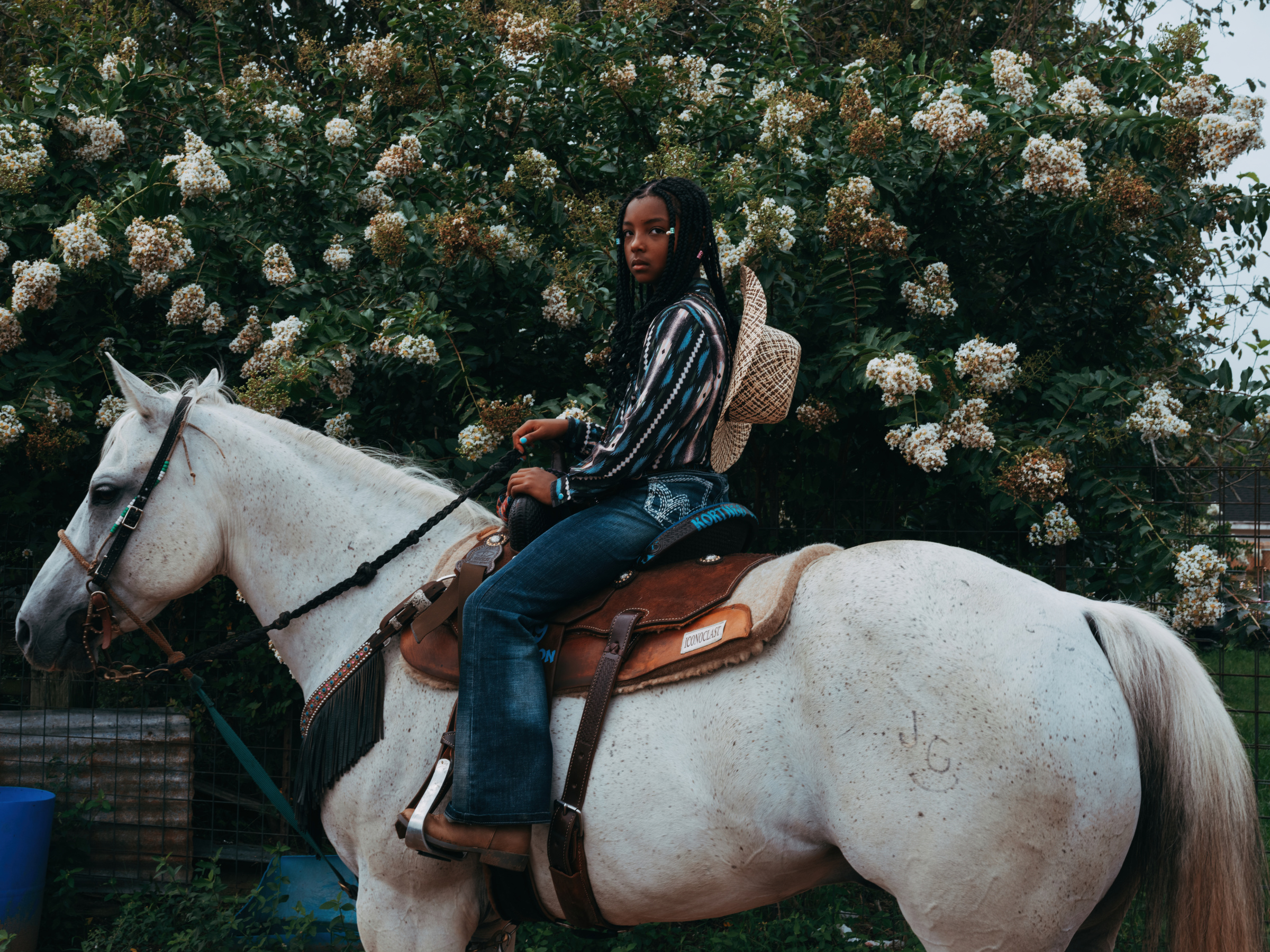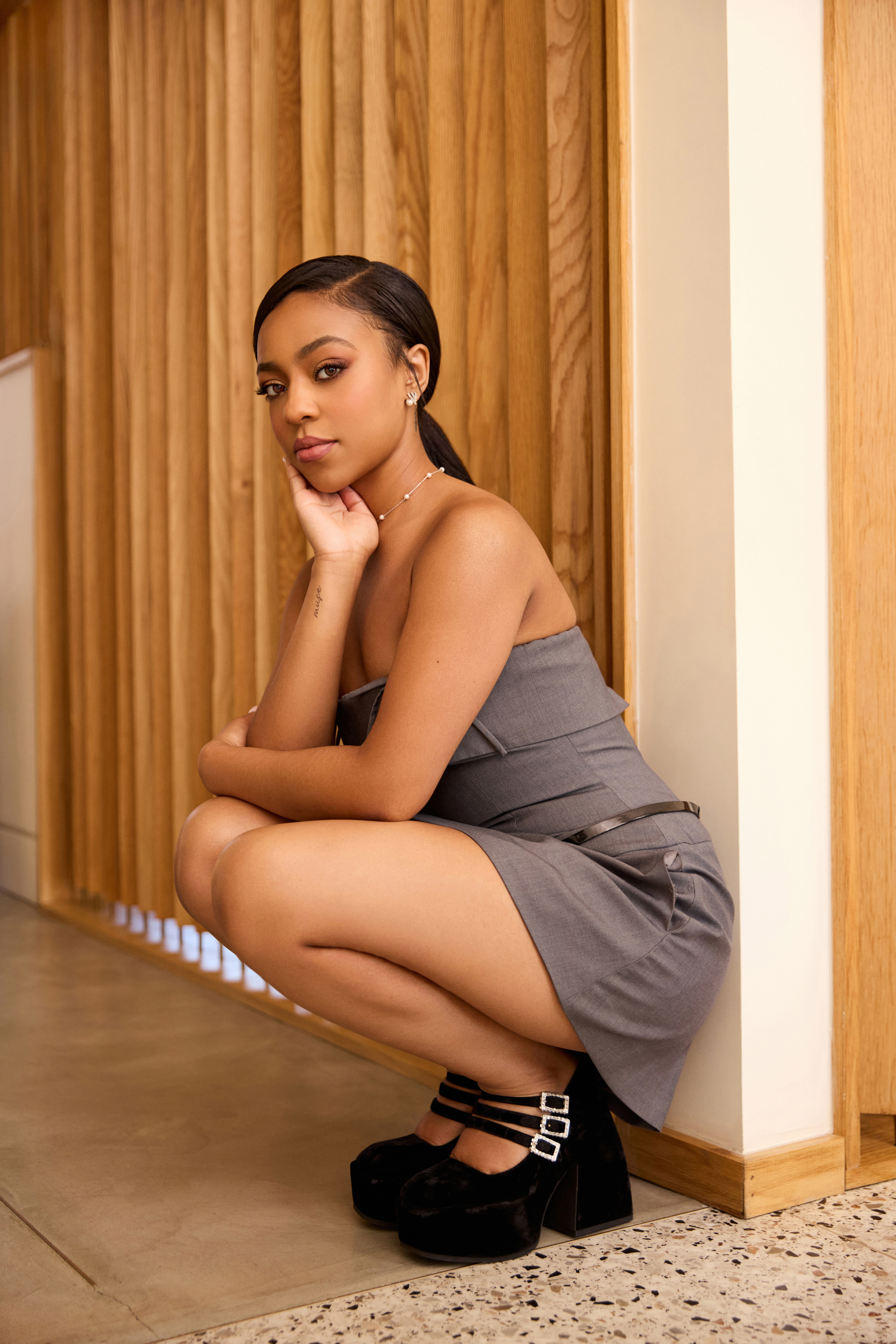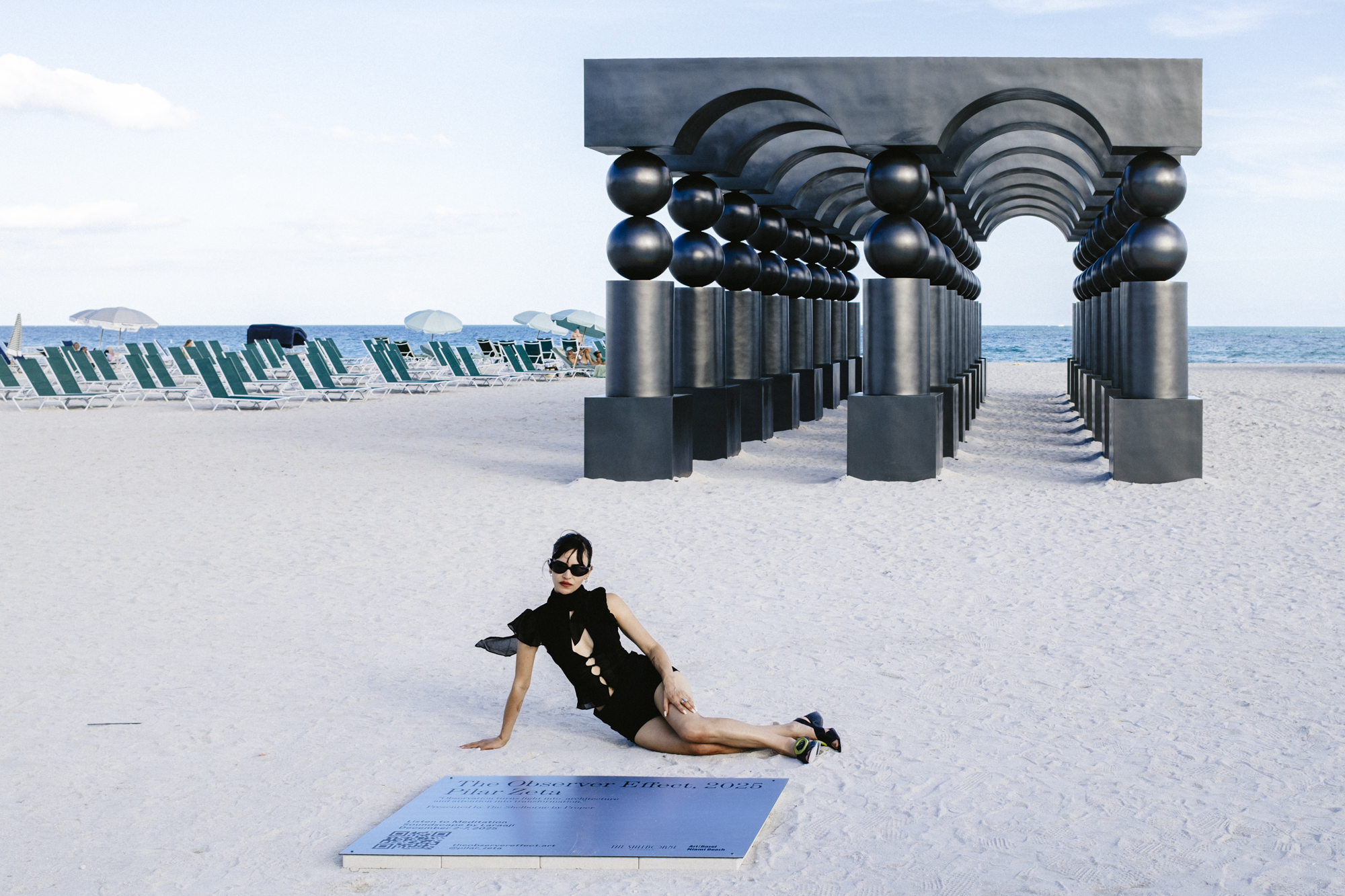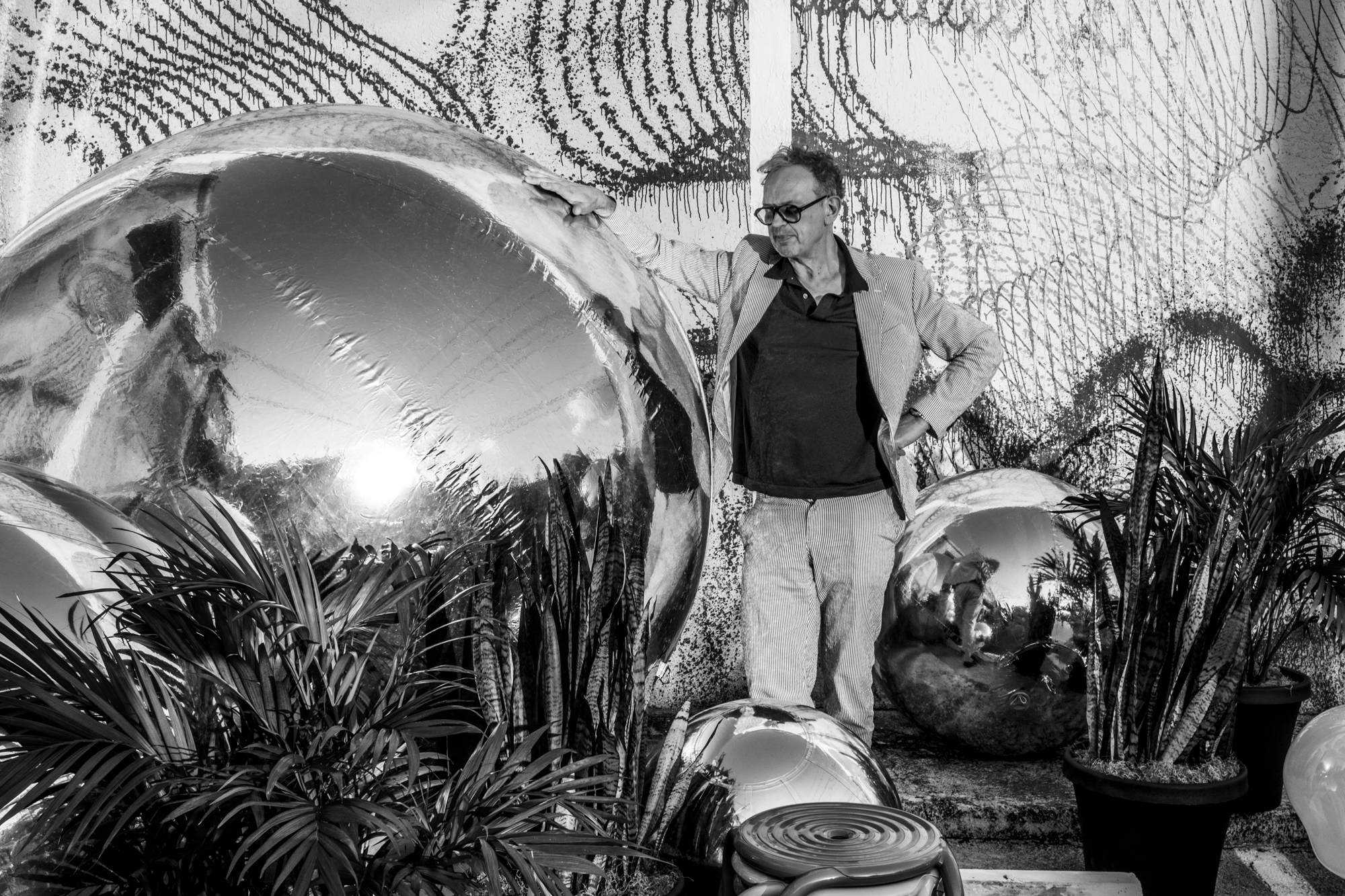Ivan McClellan’s book Eight Seconds (Damiani) provides a portrait of contemporary Black rodeo culture in America. Ivan is also the organizer of the Juneteenth rodeo in Portland—the first Black rodeo in the Pacific Northwest. Here, he speaks with Sixtysix magazine‘s Editor-in-Chief about the process that brought Eight Seconds to life.
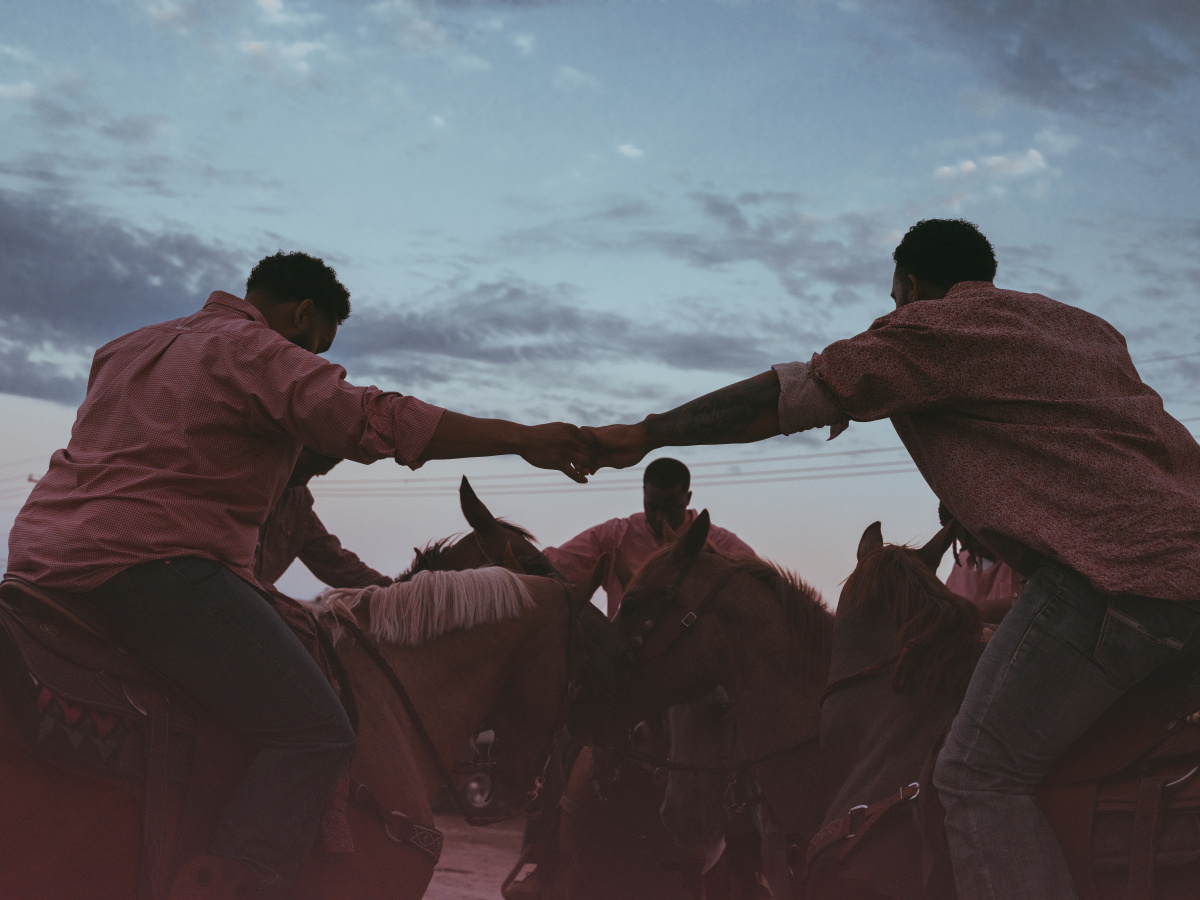
The Black rodeo changed Ivan’s definition of “home” from a place of pain and poverty to a place of pride, grit, and independence. Pictured, Cowboy Prayer in Okmulgee, Oklahoma
Chris Force: When you first grabbed the camera, what were you shooting?
Ivan McClellan: I went on a trip to Istanbul and wanted to take some pictures. I’d never been on an international trip before. I went to my friend, Dan McDowell, and asked him if I could borrow his camera. It was a Canon Rebel something. I just walked around, freely taking pictures of everything I saw over there.
What were you doing with those images?
Nothing. I posted them on Facebook. At the time I had no idea photography could be a career. People were like, “Cool,” and that was the end of it.
How did you transition from “eager beginner” to becoming a professional photographer?
My beginner’s luck faded when I started trying to monetize my photography. Initially shooting a wedding led me to pursue a style similar to Pinterest photos, then I shifted to fashion photography. The work became very unenjoyable. I thought success meant having to compromise my vision.
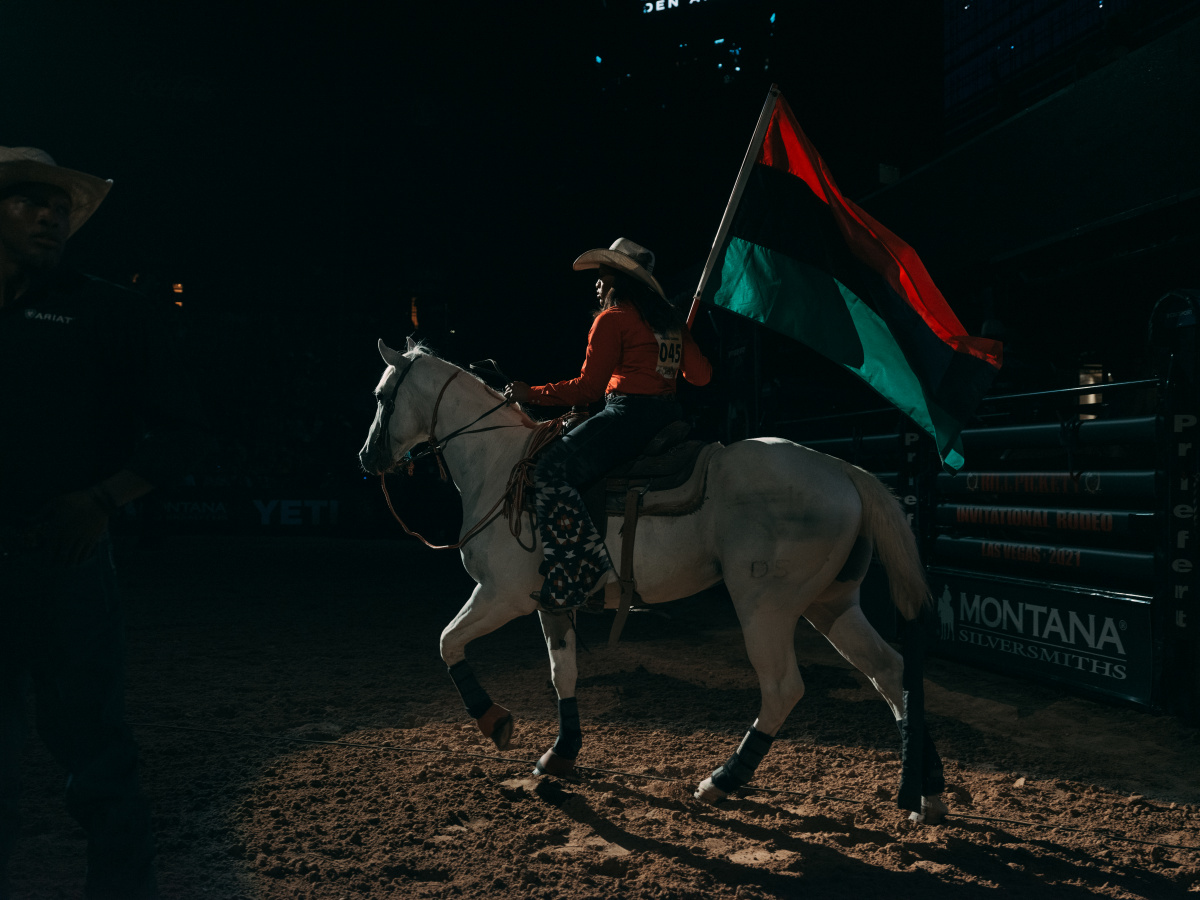
“I need structure in everything I do. I enjoy following a process, doing the same thing at the same time, in the same way every day,” Ivan says. “For me waiting for inspiration rarely leads to good work.” Pictured, Raemia Clemons in Las Vegas, Nevada
Then somebody told me, “If you want to own the work, don’t take money for it.” I took that to heart and separated the work from commerce. I immersed myself in street photography in Portland, shooting daily, whether I was inspired or not. I would walk the same loop in the city, taking photos in the same spots. Some days extraordinary things would happen; light would bounce off a skyscraper and shine directly in the spot I was shooting. Then somebody incredibly interesting would walk into that spot.
I eventually found that a combination of location, subject, and lighting were key to masterful photos. I did that for five years as a mindfulness exercise, and my work improved quickly. That was the energy I rolled into my first rodeo with—that ability to interact with people on the fly, that discipline. The ability to see stuff I would have ignored normally.
I still try to keep the mentality of an amateur. Somebody who’s shooting for love rather than commerce.
If you had to rely on photography to pay the bills, would you have been able to create the work you’re making now?
I don’t think so. I wouldn’t have had time to develop the look of my work or how I interact with folks or find my true passion. No knock against people making a living doing it, but stepping away from the dollar was crucial for me developmentally.
You have a day job working on Lightroom for Adobe. It seems like the tech world is intentionally at odds, or dismissive of, the creative world that they are theoretically serving.
Yeah, absolutely. Oftentimes I’m in meetings with people who couldn’t care less about photography, and we’re working on photo software.
Many decisions don’t often consider that, at the end of this, someone’s going to make something beautiful. Someone’s going to express themselves with the software. Typically it can be developer-led, and they can lead you down a path of soulless features. That’s why I was hired at Adobe—to come in and be the soul of the software and advocate for the professionals as best I can. I was hired as a photographer, not as an experience designer, even though that’s my job title. They were wondering, “What does a professional photo shoot look like?” Nobody in the company has that experience except me.
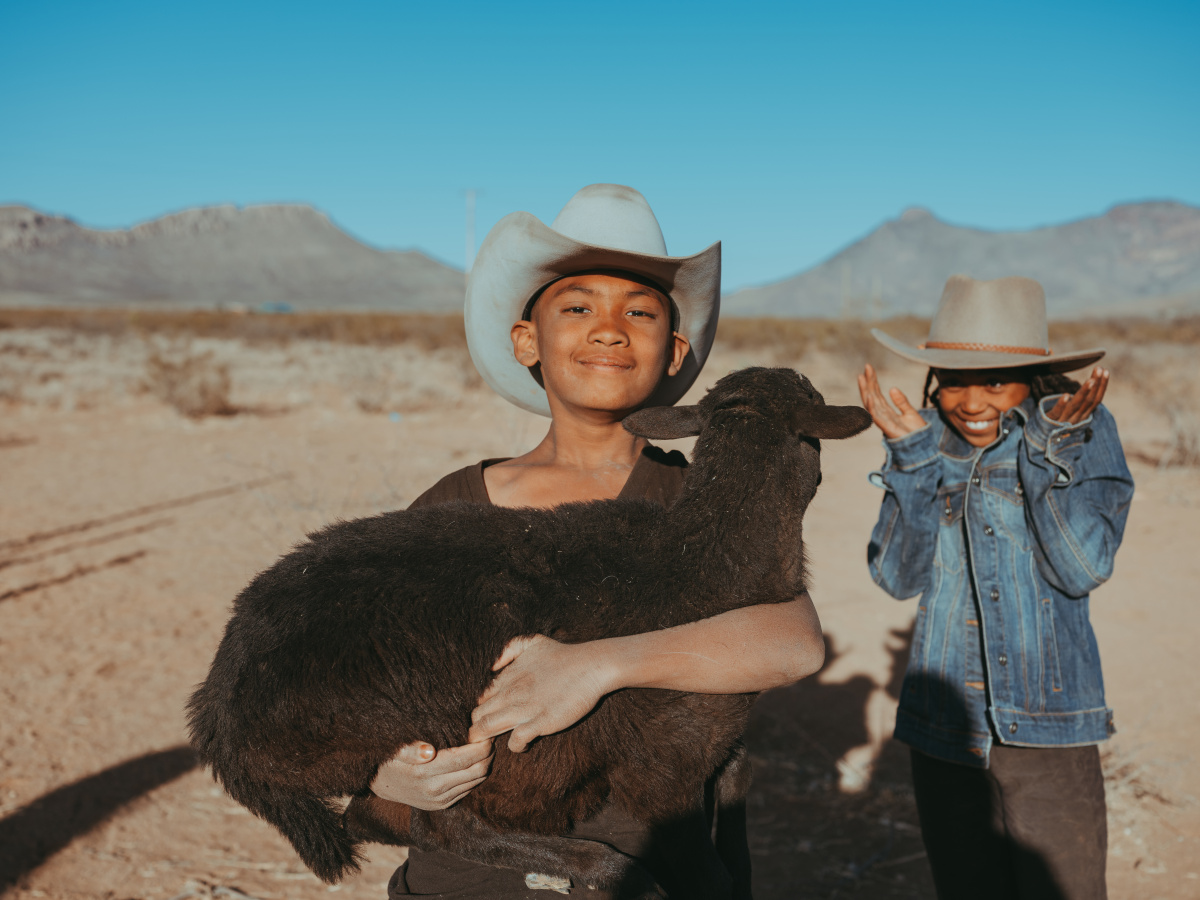
Ivan photographs rodeos not only to disrupt perceptions of the American Cowboy, but to celebrate this newly found part of his own identity. Pictured, James & Zinaye Stewart in Douglas, Arizona
What was your mindset when curating Eight Seconds? What was your criteria for choosing which images made it and which stayed on the cutting room floor?
I focused on pacing, starting out pastoral and ramping up in speed. The book went from daytime to nighttime, with attention to zooming in and out on images. I incorporated blank “breathing” spaces into the book and sent it to my editor, Sara Rosen. Her exact words were, “This book is great, but it looks like a wedding album. I want to see the fullness and the richness of this world. Not just epic shot after epic shot of cowboys.”
Some of the best photos I’ve ever taken aren’t in the book because they didn’t fit into that flow. After culling it down to about 600 images, Sara did her thing. The theme of it is “a day in the life of the rodeo,” progressing from people milling about to community gatherings, event preparation, and action shots. Sara’s masterful hand ensured the book maintained the speed and pace I envisioned, and it helped that she wasn’t attached to the work at all. There’s a picture in the book of a church with a septic tank next to it, and a tree. I would have never included it, but she saw something in it. I really enjoyed looking at the book through someone else’s eyes.
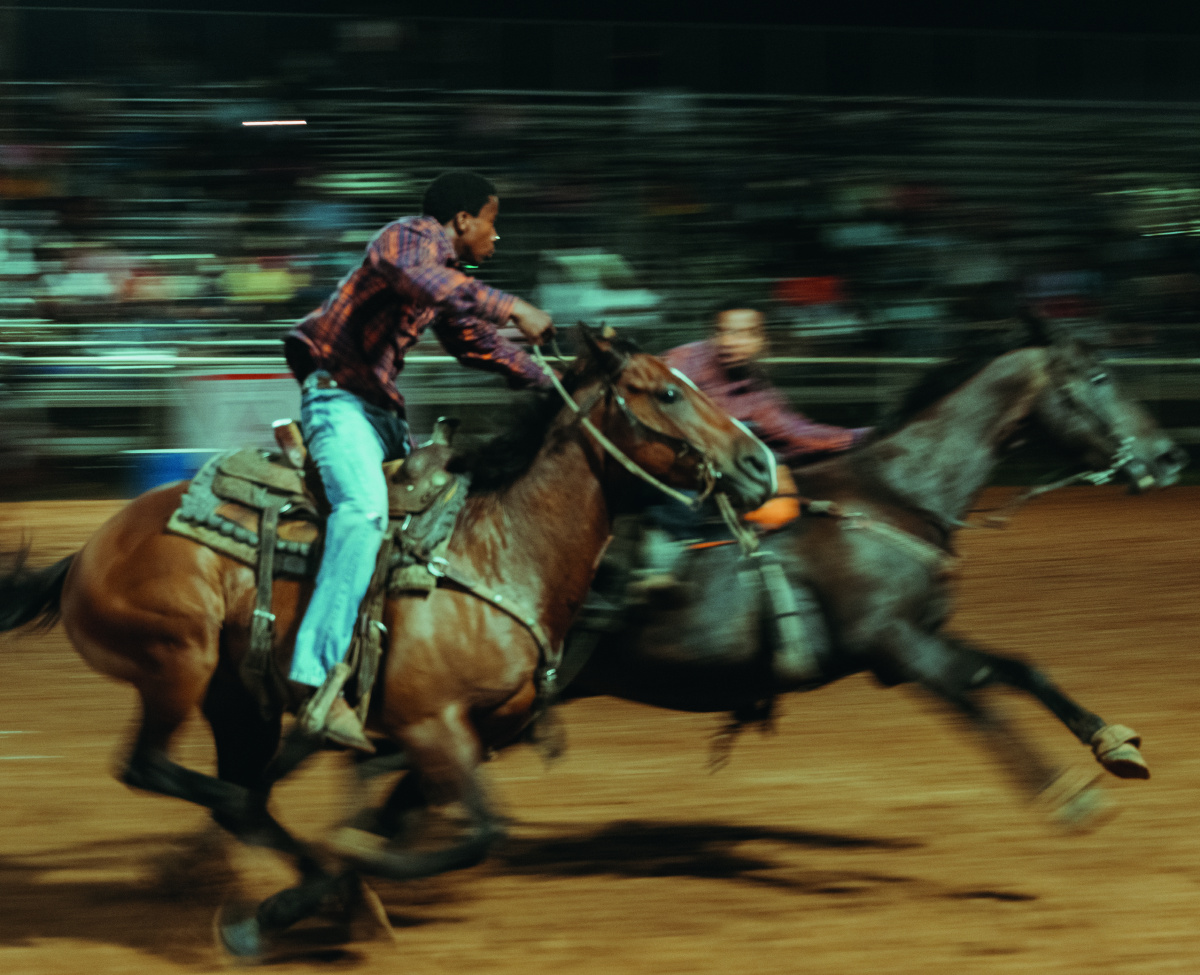
Ivan’s devotion to this long-form documentary project required him to hone his reflexes, endurance, and stamina to get the perfect picture. Pictured, the cover image for Eight Seconds, shot with a medium format Fuji and a 63mm lens.
The cover image choice for Eight Seconds is brilliant but also daring since there so much “wrong” with it technically.
When I took that photo, I was too close to the action to focus the camera properly. I was shooting on the dirt in the arena with a medium format Fuji and a 63mm lens. It was impossible to lock in focus with how close those horses were. From that perspective this photo was blown. Even from the perspective of safety, I’m way too close. There are clumps of dirt hitting me and the riders are adjusting their course for me, which is dangerous because they’re riding at 50 miles an hour. When we were selecting the cover, no other photo expressed that energy. When you look at the totality of the book—the chaos, the feeling—there’s mystery in that photo. I’m proud of it now.
There’s another beautiful image in the book that’s somewhat out of focus. It’s a boy and a baby who appear to be racing along on a horse.
That’s Rodney and his sister Riley. The horse is a Tennessee Walker, so it has a fast gait. Rodney called it the “Cadillac of horses.” As he rode by me his mom was standing there holding his eight-month-old sister.
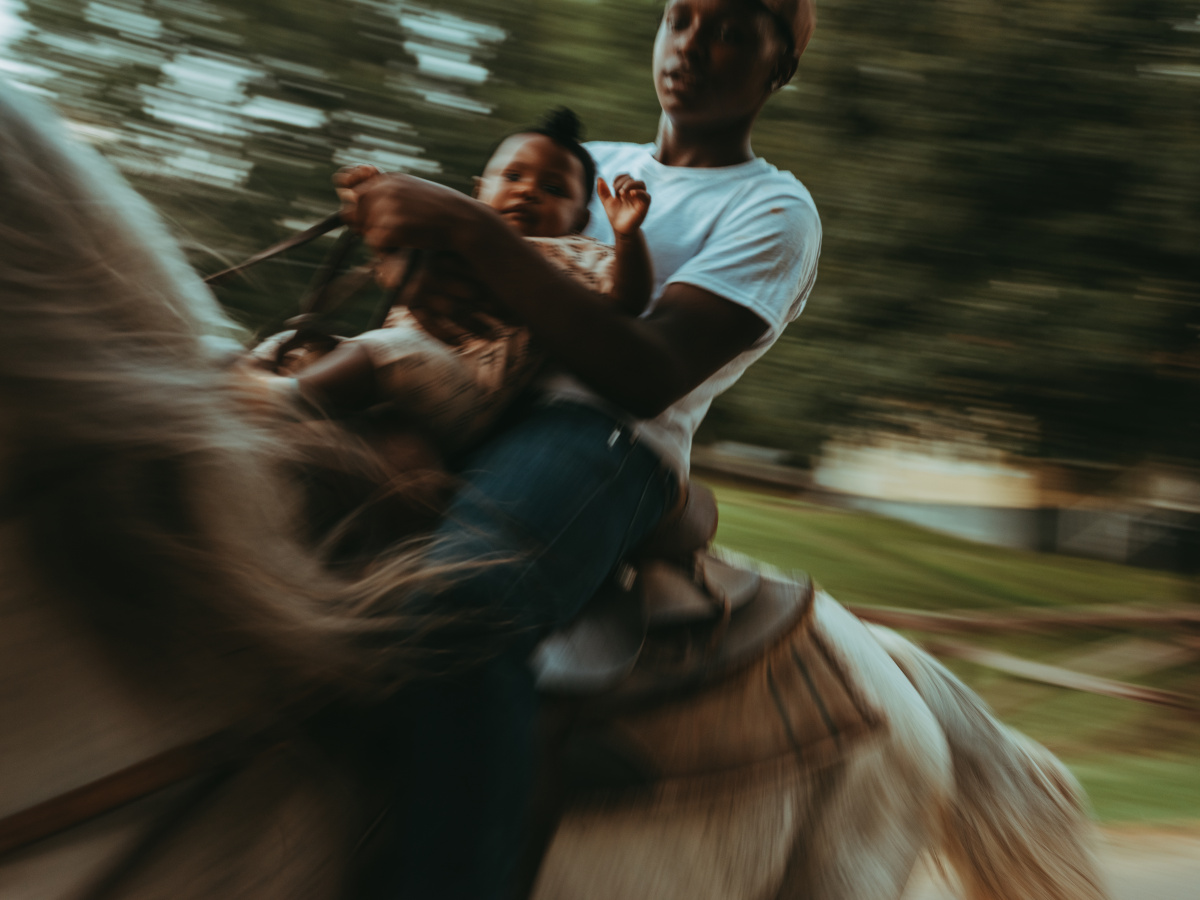
“The baby isn’t crying because this happens all the time,” Ivan says. “To me the photo symbolizes knowledge being passed down. It’s a legacy photo. This is how these cowboys learn how to ride.” Pictured, Rodney & Riley in McCalla, Alabama
He just swooped her up and rode down the street. I wasn’t prepared; you can sense my surprise and concern in the photo. I’m shocked by what’s happening, but Rodney is cool—he’s in charge. The baby isn’t crying because this happens all the time. To me the photo symbolizes knowledge being passed down. It’s a legacy photo. This is how these cowboys learn how to ride.
The first time you experienced a Black rodeo you said, “They felt like home.” Is there an image in the book that captures that feeling of home?
The photo of Kortnee Solomon, taken at her home when she was 11 years old. We were shooting photos of her barrel racing, and she advised me on the best spot to stand for a good shot.
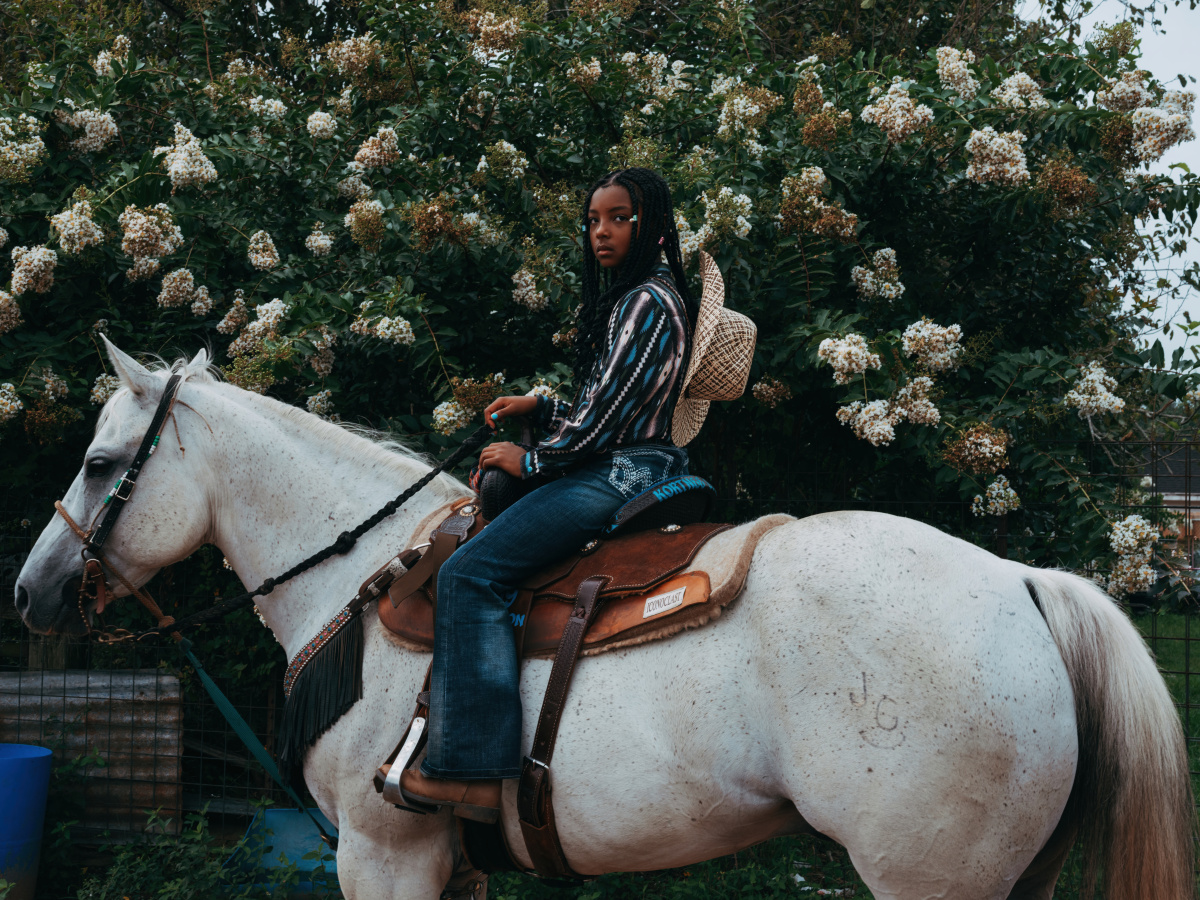
“Kortnee suggested she pose in front of this big, textured, white and green flower tree,” Ivan says. “Since it’s her home I knew it was something she had seen often and found beautiful.” Pictured, Kortnee Solomon in Hempstead, Texas.
After getting a technically sound photo of her racing, she suggested she pose in front of this big, textured, white and green flower tree. Since it’s her home I knew it was something she had seen often and found beautiful.
She initially smiled with her hat on. I picked up my camera, and she said, “Wait, that’s not the photo.” She took off her hat and looked at me straight on. I was impressed by her comfort with her environment, and with me. I don’t think this photo would have happened if she hadn’t felt at peace, at rest, and most importantly in charge. That stunning portrait of her is in museums now.
This is one of my favorite images in the whole book, this boy petting the horse. Tell me about this moment and how you see what’s happening in this image.
That’s Freddie, who I met at a parade a year prior. He was curious why everyone was taking his picture that day to which I replied, “Because you’re cool, man. You look cool. Don’t worry about it.” He’s drinking a strawberry Shasta that he just pulled out of his uncle’s cooler. His uncle’s horse comes up wanting to be pet, and he obliges. It’s the perfect summer childhood photo.
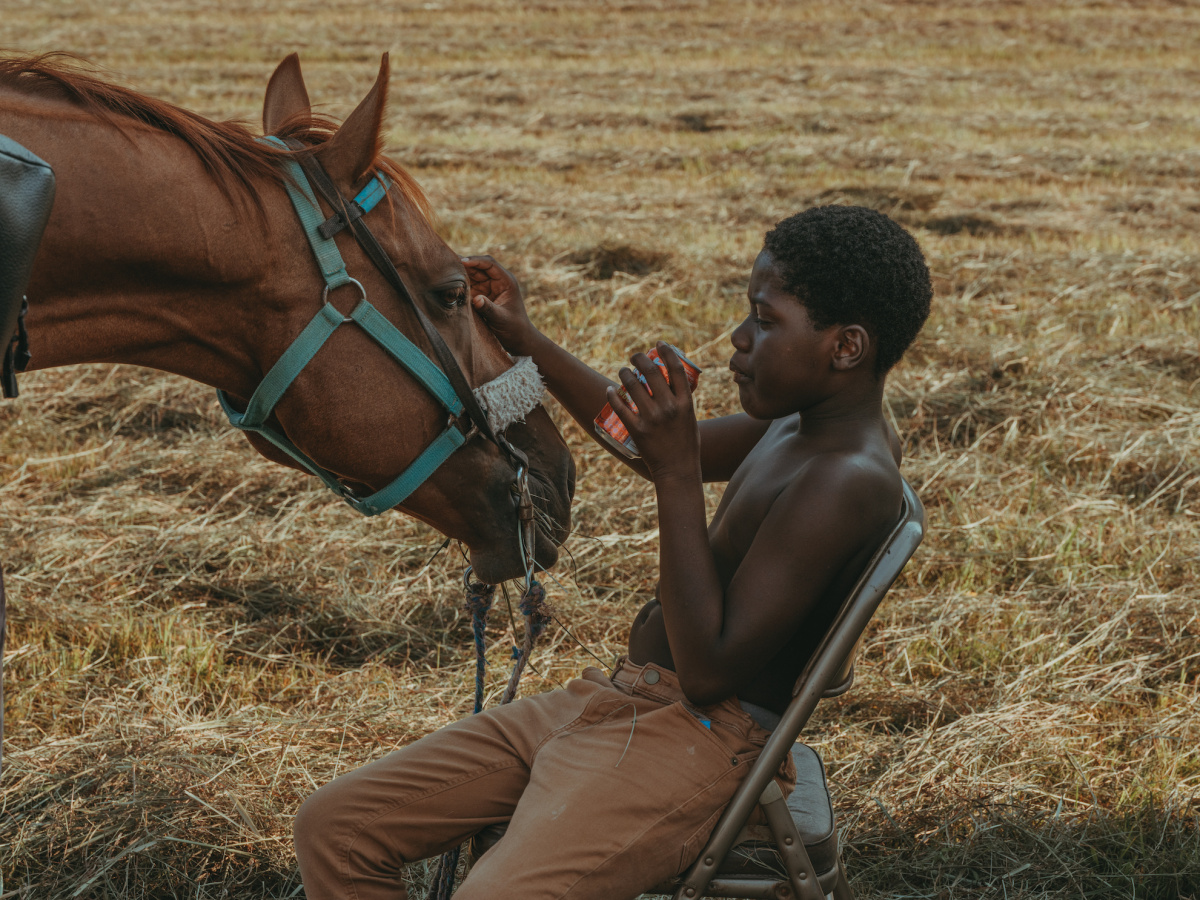
“Freddy is drinking a strawberry Shasta that he just pulled out of his uncle’s cooler,” Ivan says. “His uncle’s horse comes up wanting to be pet, and he obliges. It’s the perfect summer childhood photo.” Pictured, Freddie in Boley, Oklahoma
This moment only happened because I met him a few times. He’s not concerned with me. I saw Freddie having this serene moment and got to participate in it. This photo was sold to a museum in Belgium, and I gave $2,000 of the money to Freddie. He took that and bought his first horse—a Palomino. That was something I felt good about and speaks to our relationship.
In the picture of the two men in front of the trailer, the subjects read as people who are tough, or working hard, or who have a lot of grit. But there’s also a sense that they embody the cowboy spirit of just doing whatever they want, following their own desire. I’m wondering how you read this image?
That’s Dontez and Floss, a father-son duo I met in Okmulgee, Oklahoma, right before the Roy Leblanc Invitational Rodeo starts at around 7:45pm. The lighting at this time is right where I want it to be. This period has become my happy place, and my favorite time to take photos over the last 10 years.
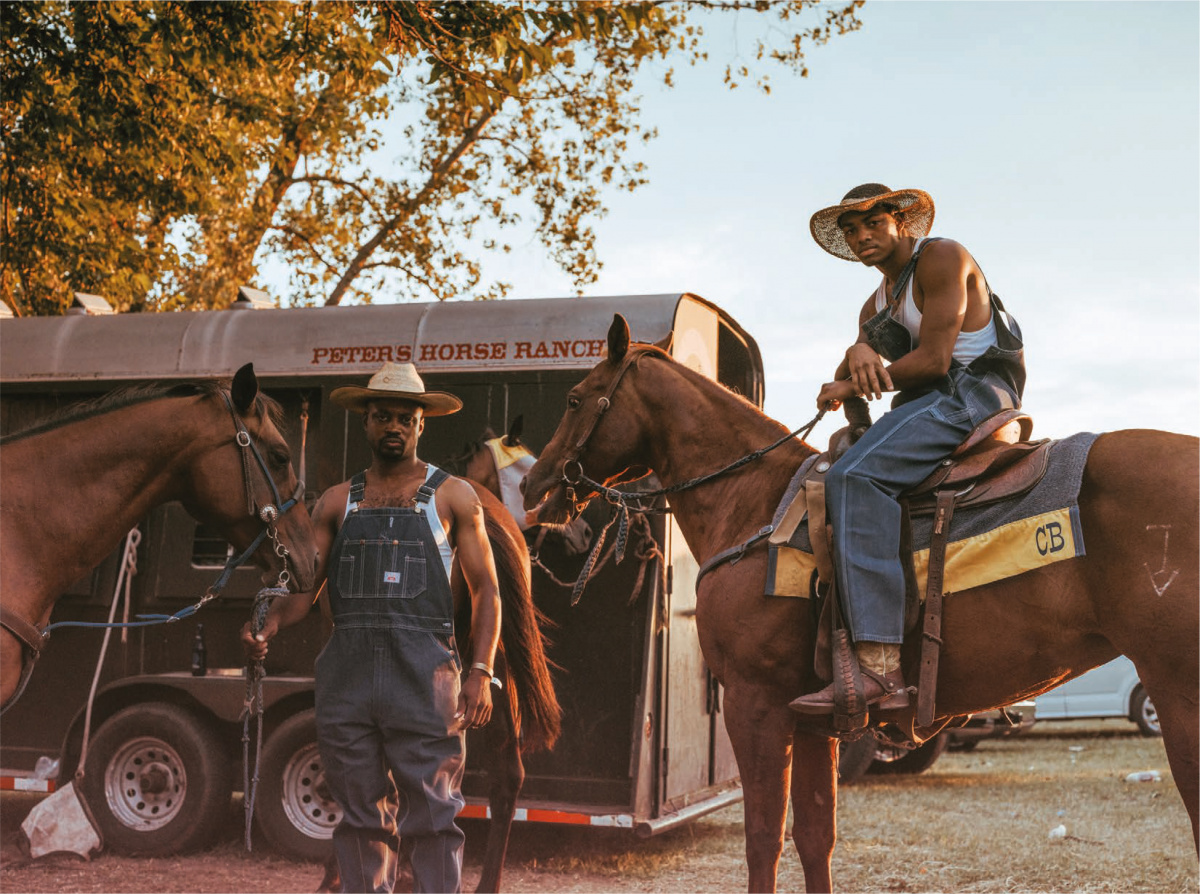
Black women and men have been cowboying since the beginning and have a thriving culture today. Ivan elevates this culture through media and live events, encouraging young people to continue this legacy. Pictured, Dontez and Floss preparing for the Pony Express race in Okmulgee, Oklahoma
Every year during this time Dontez and Floss are next to this tree preparing for the Pony Express race. They look tough, but they’re sweet as pie. Floss is wearing his cowboy hat he’s had forever, so the top has worn away—and that’s an advantage because it’s 105 degrees. This photo captures the joy of creation and community, and I make sure to capture a version of it every year.
This goes back to what you were sharing about your five years of walking and documenting the same path. It sounds like you’ve made a lot of rules for your process to create your system for image-making. Did that happen organically, or did you realize you needed structure for your images?
I need structure in everything I do. I enjoy following a process, doing the same thing at the same time, in the same way every day. For me waiting for inspiration rarely leads to good work. Inspiration is fleeting and unpredictable. With a process I’m more likely to create great images because I’m consistently practicing, learning, and becoming more comfortable with my tools. That way I’m able to see more deeply.
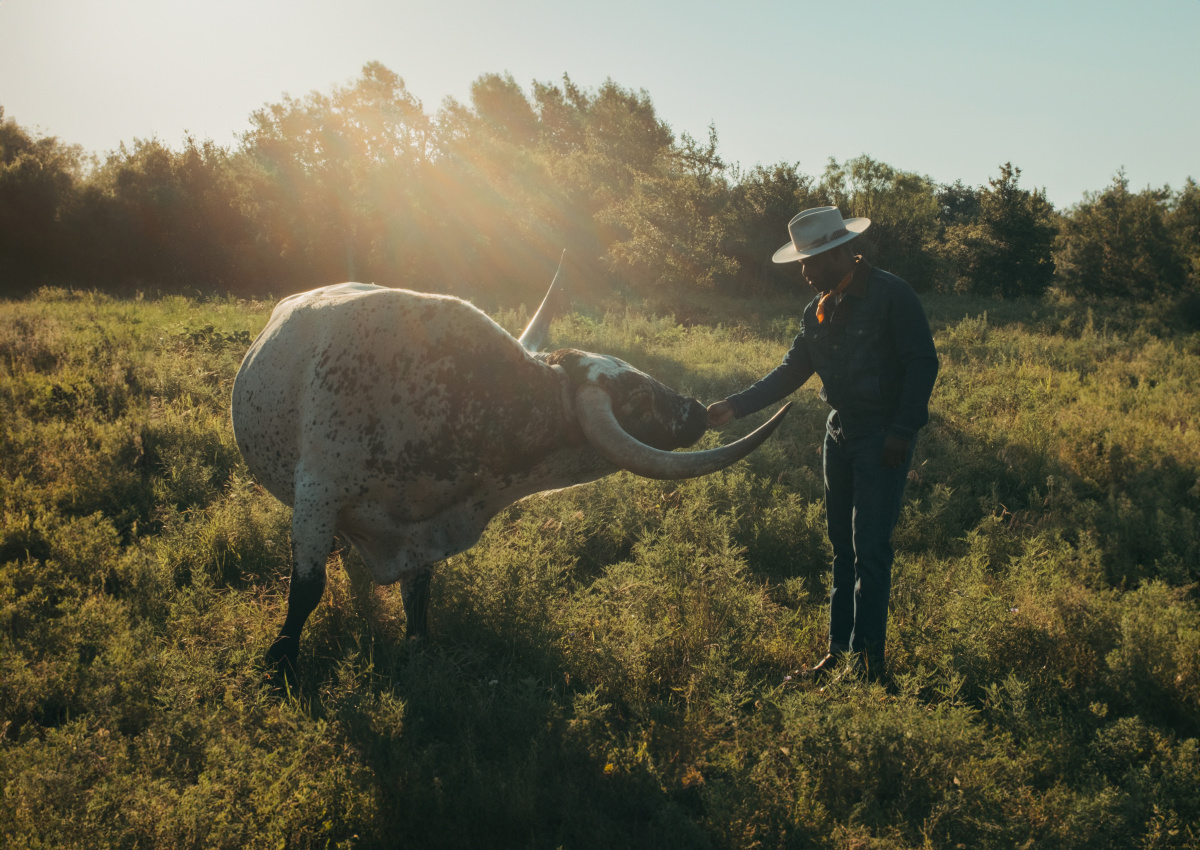
Abraham Alexander in Fort Worth, Texas
In sports I was never good at the game, but I was great at practice. I was an actor for some years, and I was never very good at performance. But in practice I was crushing it. I view my photography as practice rather than performance.
A lot of us are seeing this book for the first time, but you’ve lived with it in its form for awhile. Has your process changed at all now? What’s the next step?
This book has disrupted my process, motivation, and intent in the work. My instinct now is to get closer—not just physically, but to the people and their lives. What do the cowboys do on Sunday? How do they celebrate holidays? My heart is telling me to go beyond the rodeo and move into a more private space.
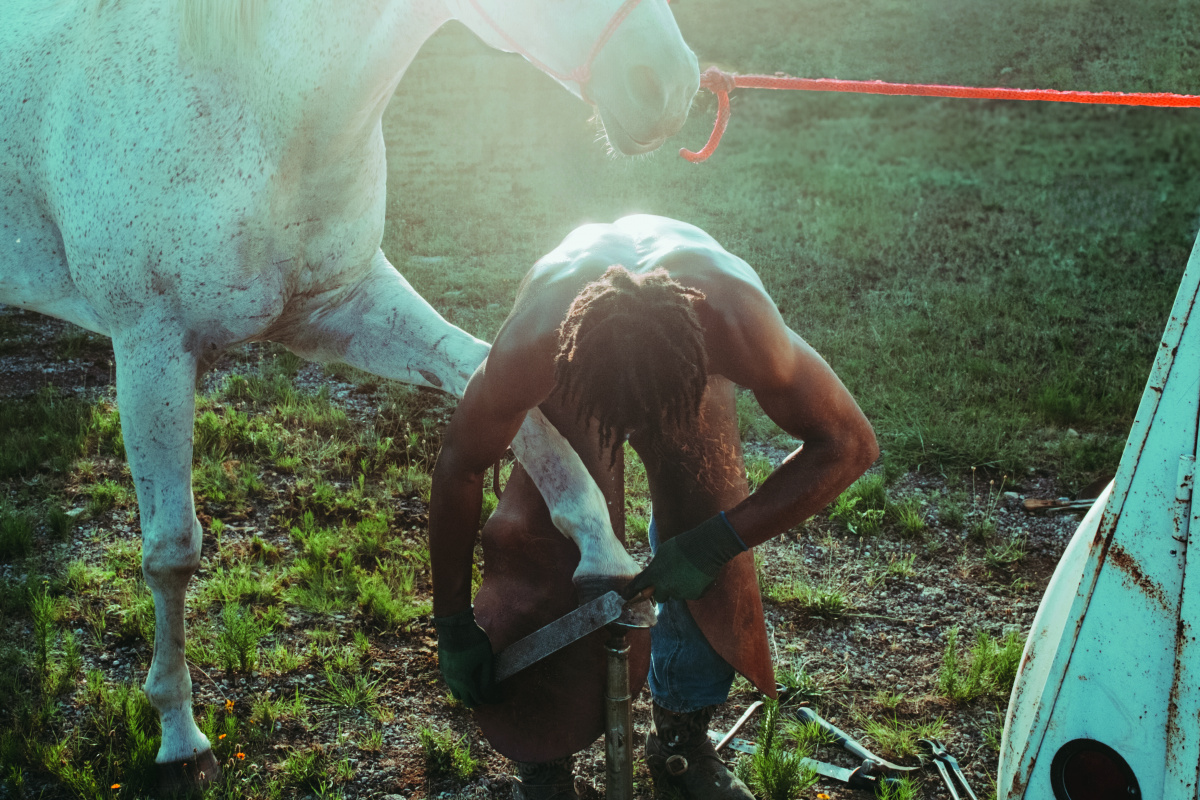
Delton Bagby in Bristow, Oklahoma
I look at my work and I realize none of this was taken inside. I didn’t get invited into anyone’s home. All this stuff is outdoors at a public exhibition. As much as I feel welcomed into this community, I haven’t even gained the most basic access to anyone’s personal life. I don’t know any of the horse’s names. I haven’t had a meal with a lot of these people. That level of intimacy would create more compelling work worth continuing.
There’s a theme of hard work and joy throughout these images, but I imagine in this community you’ve probably seen some painful moments because it’s a risky sport. Do you tend to not shoot those types of images? Or was that part of editing the narrative?
When somebody gets hurt at a rodeo it’s considered taboo to take a picture of it. I learned this early on when a rider slammed into the fence in front of me, and I was clicking away. Suddenly my camera was off my face and this photographer explained, “No, we don’t take pictures of that.”
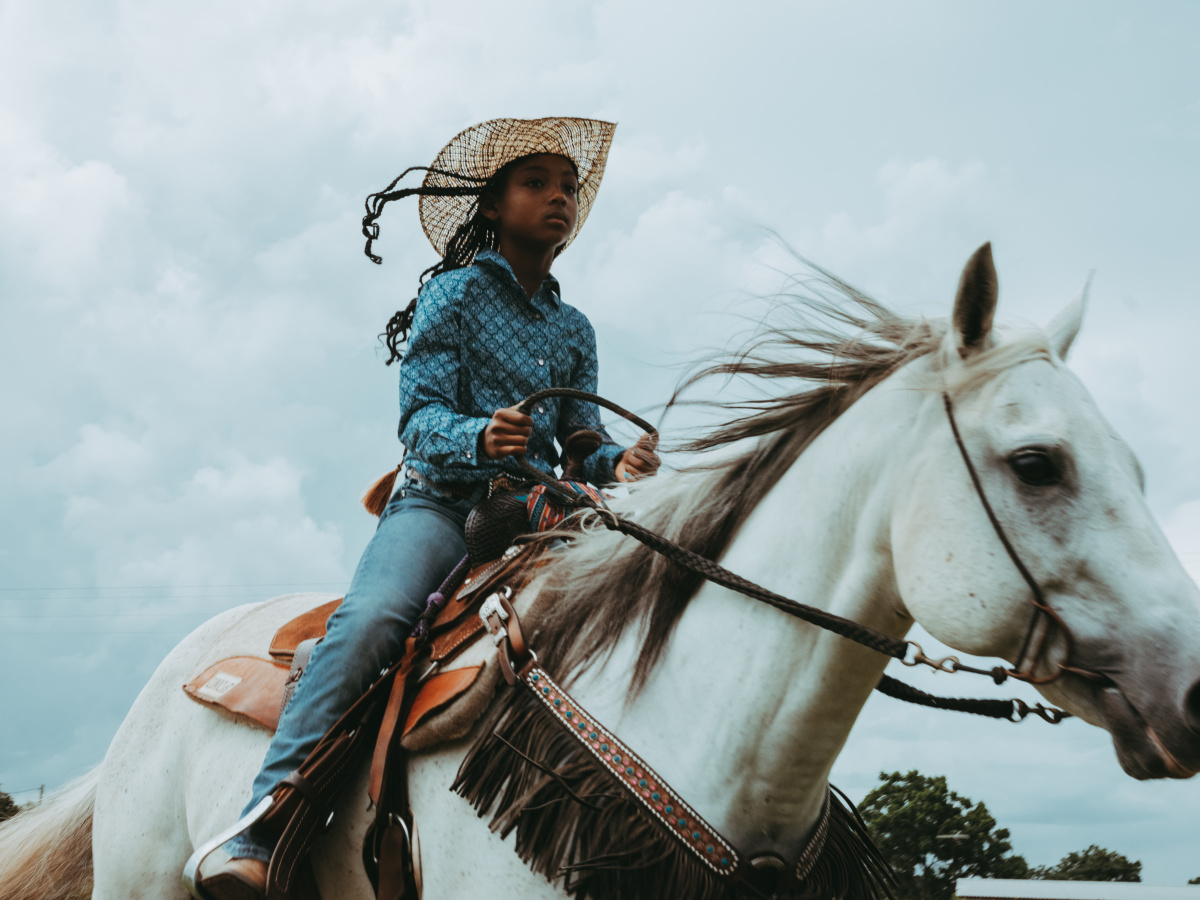
Kortnee Solomon, Hempstead, Texas
One of my close friends, Ouncie Mitchell, a bull rider, is featured in the book. We got close; I’ve been to his home, and we’ve ridden around cruising and chatting, eating meals. I got close to him the way I would like to get close to these other folks.
He aspired to win the world championship in bull writing, and he went after it with no money or resources. He traveled from town to town, relying on winnings to get to the next town. When he went to towns where he knew somebody he would stay with them so he could get a shower and a meal.
On one trip he was staying with a woman in Salt Lake, and she shot and killed him. His death was devastating for me and for the cowboy community. It was really a realization of the consequence of getting too close. If you get too close in the arena, you could get hurt—but if you get too close in life, your heart can get broken. After he passed I felt it was a big moment for me to decide, “Am I going to stop here, or am I going to continue to go deep with this?” I decided to double down, and I’m ready to do even more.
A version of this article originally appeared in Sixtysix Issue 12. Subscribe today
